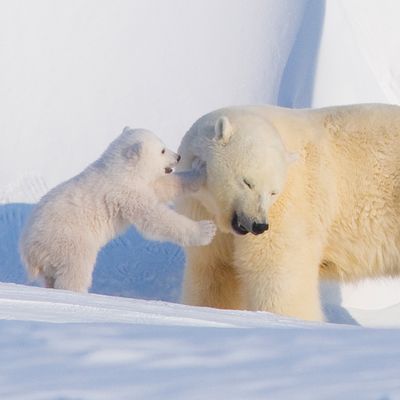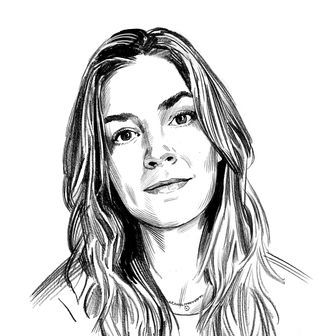
Given that the Arctic has recently been ablaze — one of the world’s coldest, iciest climates plagued by wildfires — it seems like an understatement to say that the situation up there is dire. The likelihood that a Siberian town would top 100 degrees is, by one scientist’s calculation, “a 1-in-100,000-year event,” and yet, in June, it happened. Temperatures are rising and sea ice is melting, and as a result, the polar bears risk extinction by the end of the century, the New York Times reports.
Of course, the polar bear has long been a prominent (and complicated) symbol for climate-related devastation in the Arctic. Now, a study published in Nature Climate Change suggests that even if we achieve a decline in carbon emissions by 2040, we will still see significant sea bear (the polar bear, a.k.a. Ursus maritimus, qualifies as a marine mammal, did you know?) losses as sea ice melts.
Polar bears subsist mainly on seals, whose fatty little barrel bods provide calorie-dense meals, particularly to mother bears feeding cubs. But polar bears, of which there are an estimated 25,000 in the Arctic, don’t typically catch seals in open water; they catch them by lurking around holes in the Arctic ice and waiting for their prey to come up for air. When you are a polar bear, “You need the sea ice to capture your food,” Peter Molnar, the study’s lead author and an assistant professor of biology at the University of Toronto, explained to the Times. “There’s not enough food on land to sustain a polar bear population.”
In some parts of the Arctic, spring and summer sea-ice recession pushes polar bears onto the shore, where their seal stores allow them to fast. But as sea ice increasingly thins, researchers suspect that prolonged fasting periods will lead to starvation. “There’s going to be a time point when you run out of energy,” Molnar told the Times.
And if we continue at our current warming rate, the researchers determined, that point will come by 2100. Polar bears will have less ice time in which to load up on seal meals, and will expend more energy during fasting periods as they rove around in search of food and mates, making a bad situation worse. “The drop in reproduction and survival will jeopardize the persistence of almost all [19] sub-populations” across Canada, Alaska, Siberia, Svalbard, and Greenland, the study concluded, according to the Brussels Times. And even if we mitigate emissions after 2040, the effect on most subgroups would still be disastrous. Many could still be wiped out, researchers warned.
In the grand scheme of bears, it’s agonizing to choose a favorite, when every bear is a very good bear. The polar bear, however, is an especially pure specimen. Did you know, for example, that they ask permission to share food by gently booping noses? Did you know that despite being mostly solitary animals, they occasionally form friendships and will remember those friends even after years of separation? What did the polar bears ever do to deserve this?


